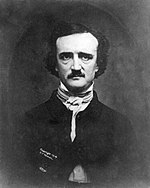Associate Professor
James McGill Professor
Bell Chair in the Psychology of Electronic Communication
Laboratory for Music Perception, Cognition, and Expertise
Department of Psychology, McGill University

A fascinating exploration of the relationship between music and the mind—and the role of melodies in shaping our lives
Whether you load your iPod with Bach or Bono, music has a significant role in your life—even if you never realized it. Why does music evoke such powerful moods? The answers are at last becoming clear, thanks to revolutionary neuroscience and the emerging field of evolutionary psychology. Levitin unravels a host of mysteries that affect everything from pop culture to our understanding of human nature, including:
Are our musical preferences shaped in utero?
Is there a cutoff point for acquiring new tastes in music?
What do PET scans and MRIs reveal about the brain’s response to music?
Is musical pleasure different from other kinds of pleasure?
Levitin explores cultures in which singing is considered an essential human function, patients who have a rare disorder that prevents them from making sense of music, and scientists studying why two people may not have the same definition of pitch. At every turn, this provocative work unlocks deep secrets about how nature and nurture forge a uniquely human obsession.
Produced by:
Microsoft Research
September 12, 2006
http://ego.psych.mcgill.ca/levitin.html/
Dr. Daniel Levitin earned his B.A. in Cognitive Psychology and Cognitive Science at Stanford University, and went on to earn his Ph.D. in Psychology from the University of Oregon, researching complex auditory patterns and pattern processing in expert and non-expert populations. He completed post-doctoral training at Stanford University Medical School (in Neuroimaging) and at UC Berkeley (in Cognitive Psychology). He has consulted on audio sound source separation for the U.S. Navy, and on audio quality for several rock bands (including the Grateful Dead and Steely Dan), record labels, and served as one of the "Golden Ears" expert listeners in the original Dolby AC3 compression tests. He worked for two years at the Silicon Valley think tank Interval Research Corporation. He taught at Stanford University in the Department of Computer Science, the Program in Human-Computer Interaction, and the Departments of Psychology, Anthropology, Computer Music, and History of Science. Currently, he is an Associate Professor of Psychology, Behavioural Neuroscience, and Music at McGill University. He is the author of the forthcoming “This Is Your Brain On Music.”.
Lecture can be viewed at:
http://researchchannel.org/prog/displayevent.aspx?rID=6861&fID=345
Also:
Music and the Brain. The NewsHour with Jim Lehrer, segment with Daniel Levitin.
PBS, February 5, 2007. (PDF transcript)
Book:
From Publishers Weekly
Starred Review. Think of a song that resonates deep down in your being. Now imagine sitting down with someone who was there when the song was recorded and can tell you how that series of sounds was committed to tape, and who can also explain why that particular combination of rhythms, timbres and pitches has lodged in your memory, making your pulse race and your heart swell every time you hear it. Remarkably, Levitin does all this and more, interrogating the basic nature of hearing and of music making (this is likely the only book whose jacket sports blurbs from both Oliver Sacks and Stevie Wonder), without losing an affectionate appreciation for the songs he's reducing to neural impulses. Levitin is the ideal guide to this material: he enjoyed a successful career as a rock musician and studio producer before turning to cognitive neuroscience, earning a Ph.D. and becoming a top researcher into how our brains interpret music. Though the book starts off a little dryly (the first chapter is a crash course in music theory), Levitin's snappy prose and relaxed style quickly win one over and will leave readers thinking about the contents of their iPods in an entirely new way. (Aug.)
Copyright © Reed Business Information, a division of Reed Elsevier Inc. All rights reserved. --This text refers to the Hardcover edition.
From School Library Journal
Adult/High School–Levitin's fascination with the mystery of music and the study of why it affects us so deeply is at the heart of this book. In a real sense, the author is a rock 'n' roll doctor, and in that guise dissects our relationship with music. He points out that bone flutes are among the oldest of human artifacts to have been found and takes readers on a tour of our bio-history. In this textbook for those who don't like textbooks, he discusses neurobiology, neuropsychology, cognitive psychology, empirical philosophy, Gestalt psychology, memory theory, categorization theory, neurochemistry, and exemplar theory in relation to music theory and history in a manner that will draw in teens. A wonderful introduction to the science of one of the arts that make us human.–Will Marston, Berkeley Public Library, CA
Copyright © Reed Business Information, a division of Reed Elsevier Inc. All rights reserved. --This text refers to the Hardcover edition.









































